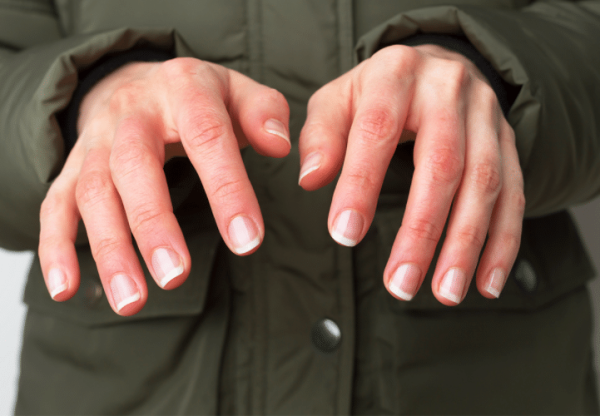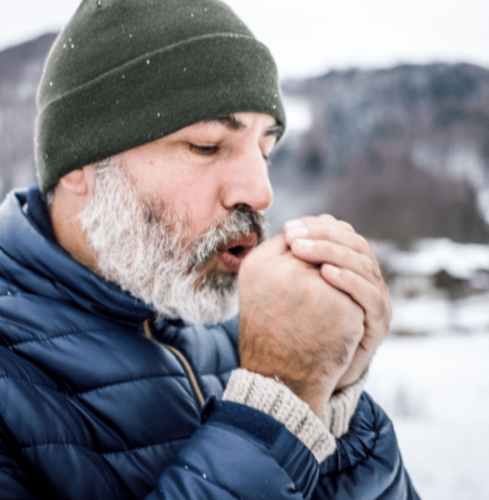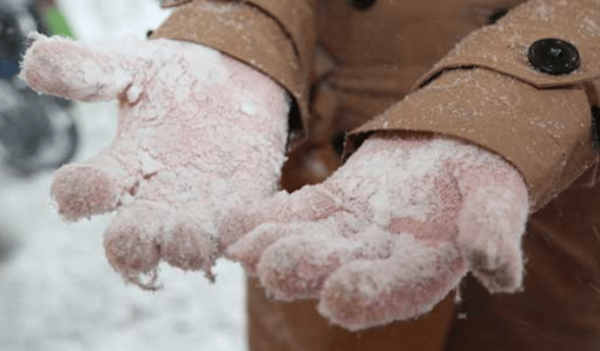Frostbite occurs when skin is exposed to temperatures below freezing for a long period of time. When it’s cold outside, you may start to feel the effects of frostbite. The most common symptoms are numbness or pain in the affected area, redness and discoloration, and hardening or swelling. If you think that you have frostbite, go see your doctor immediately! They will determine if there is any tissue damage. This article will discuss signs that indicate frostbite might be coming on, how to prevent it from happening in the first place, and what steps to take if it does happen!
Contents
Symptoms of Oncoming Frostbite

Frostbite will set in, in 30 minutes when skin is exposed in temperatures below zero. It will first feel cold with a prickling feeling in the exposed skin. The skin will start to turn a different color. The most common is red, but your skin could also turn grey, yellow, blue, or white and will feel stiff and waxy. These are beginning symptoms. Your joints and extremities will be stiff, so it will be hard to move, balance and function.
This can happen with unexposed skin as well, but mainly in the exposed parts of your body. Your skin can break, blister, and feel warm in severe cases. It should not start to feel warm or hot; those are extreme symptoms and should be treated immediately.
Treatment For Frostbite

The first thing to do is get to a warm place. Anywhere inside a building, near a fire, in a tent. Somewhere that is either room temperature or even above freezing temperatures (32 degrees Fahrenheit). Do not dip the affected area in hot water; that will burn and hurt the situation. What you want to do is dip your hands in room temperature water. You could also get a wet washcloth and cover the affected area in that as well. Slowly work your way up in temperature until the area starts to feel normal again.
Severe frostbite can feel like stinging, burning, and swelling. If you think that you have severe frostbite, go see your doctor immediately. They will determine if there is any tissue damage. If so, they may need to put you on an IV and give you antibiotics. You might also need surgery if the frostbite goes deep into the tissues.
Stages Of Frostbite

There are three stages of frostbite: superficial, partial, and full-thickness. Superficial frostbite is the mildest stage and only affects the skin’s surface. Superficial frostbite signs are changing skin color and possible blisters. Partial-thickness frostbite goes a little deeper into the skin and can cause some damage to muscle and bone. Full-thickness frostbite is the most severe stage and will affect all layers of the skin and muscles, bones, nerves, and blood vessels.
If you hit symptoms of deep frostbite, it is important to take immediate action. It is possible that the tissue could die and fall off; this means you could lose possible extremities like fingers or toes. See a doctor when you have reached signs of superficial frostbite and stages above this.
Prevention Of Frostbite

The best way to prevent frostbite is to dress appropriately for cold weather conditions! Wear hats, gloves, scarves, boots, jackets – make sure every inch of your body is covered except your face. If you’re going to be outside in cold weather for a long period, take breaks inside to warm up. Drink lots of fluids and eat healthy foods so your body can generate heat.
Make sure to stay moving and active while you are out in the cold to keep your body temperature up. Wear breathable fabrics in case you sweat. Your sweat can make you cold very fast if it builds up. If you’re going to be in an area with high winds, avoid it. And lastly, if you do start to feel the symptoms of frostbite, get inside right away!
Conclusion
In conclusion, frostbite is a very real danger in cold weather conditions. It can set in quickly and affect any part of your body exposed to the cold. Symptoms include changing skin color, joint stiffness, prickling feeling, and possible blisters. If you think you have frostbite, go inside right away and get warmed up. If it’s severe, see a doctor immediately as there could be tissue damage. Prevention is key – dress appropriately for the weather, take breaks inside to warm up, drink fluids, eat healthy foods, and stay active. And lastly, if you start to feel symptoms of frostbite, get inside!


